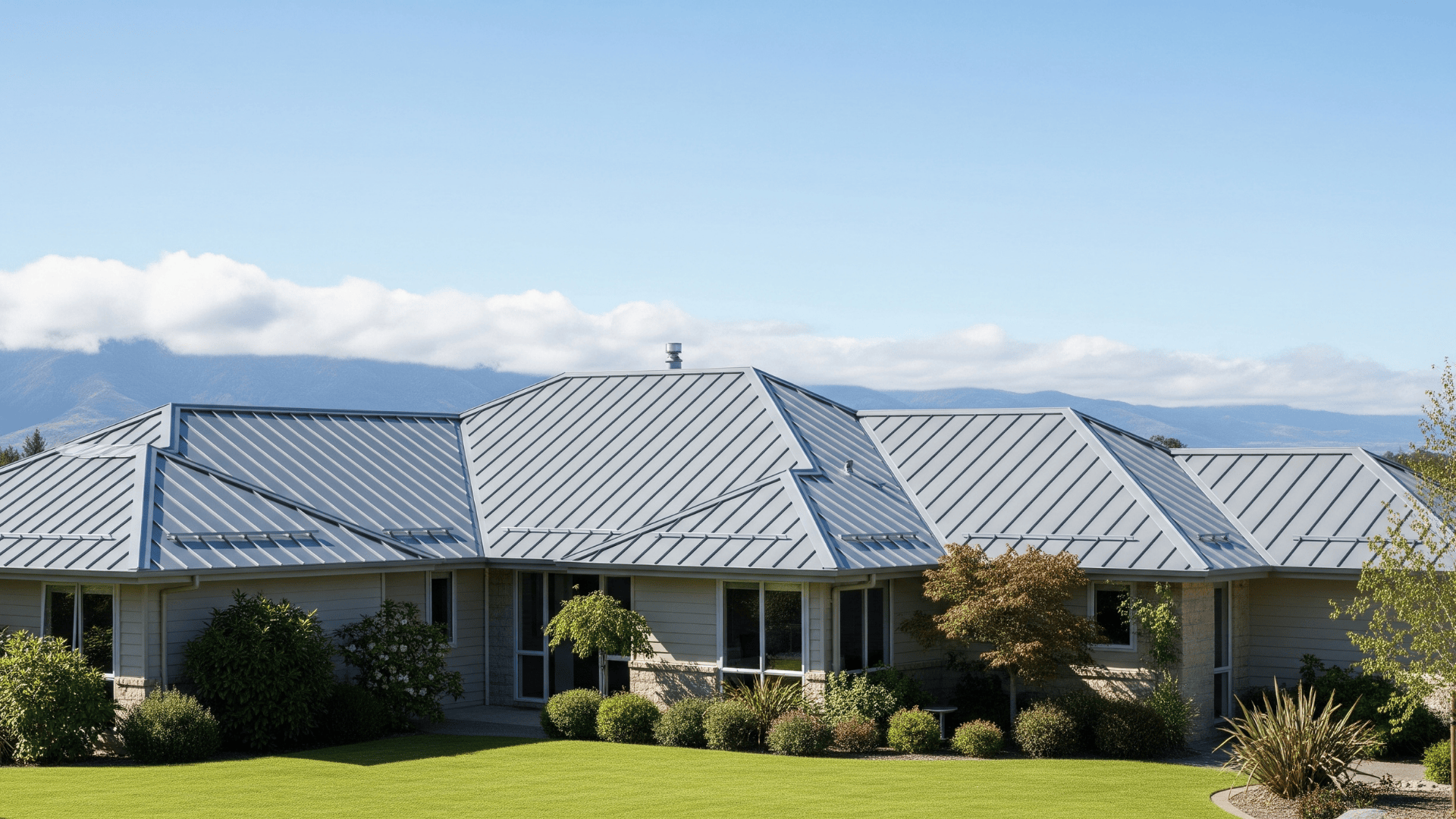Are you planning a roofing upgrade that lasts decades and looks sharp? Stainless steel roofing is the perfect choice.
It’s strong, corrosion-resistant, and sleek, making it ideal for both modern and traditional homes.
Stainless steel resists rust, withstands harsh weather, and requires minimal maintenance.
If you live near the ocean or face extreme weather, it performs exceptionally well.
In this blog, I’ll break down the different types, benefits, comparisons, and costs of stainless steel roofing systems.
Let’s take a closer look at why stainless steel isn’t just shiny, it’s a smart, long-term investment for your property.
Why Choose a Stainless Steel Roof?
Stainless steel roofs last over 50 years, resist rust, and are well-suited for coastal or snowy climates.
They’re recyclable, making them eco-friendly, and reflect sunlight, improving energy efficiency.
They add modern beauty to homes and require little maintenance compared to asphalt shingles. Though the cost is higher, the return on investment makes it worthwhile.
For anyone seeking a roofing solution that’s tough, beautiful, and future-proof, stainless steel stands out.
Let’s get into the roofing product options next to help narrow your decision.
Types of Stainless Steel Roofing Products
Stainless steel roofing is available in several profiles, each offering distinct advantages. Choose based on design preference, slope requirements, climate demands, and desired architectural effect.
1. Standing Seam Panels
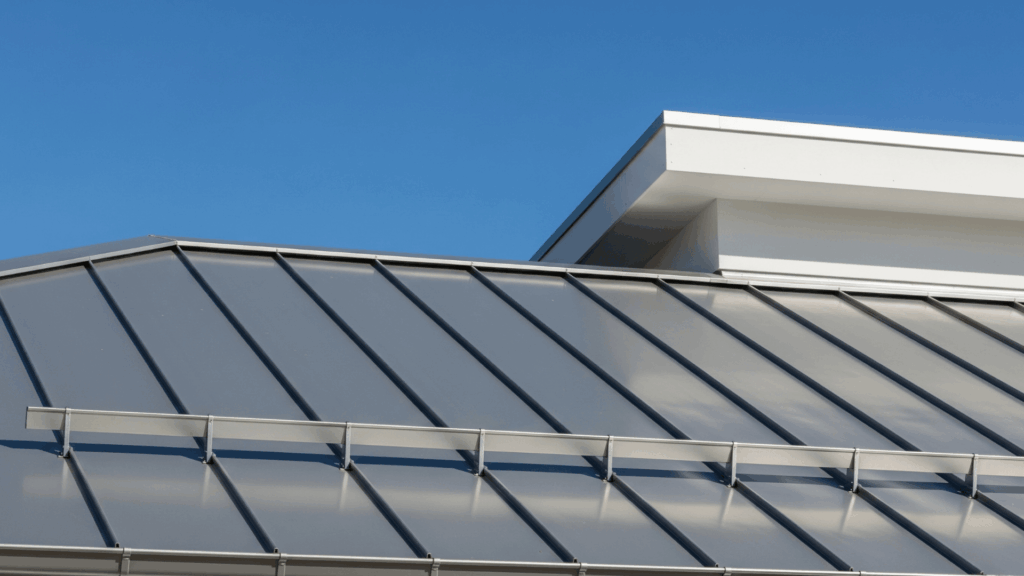
Standing seam panels feature vertical ribs with interlocking seams that hide the fasteners beneath the surface.
This design offers a clean, streamlined look that suits modern architecture and low-slope roofs.
Their concealed fastening system improves durability by reducing leak points during heavy storms.
These panels expand and contract with temperature, reducing damage risk over time.
Their sleek look, durability, and weather resistance make them popular for homeowners wanting performance and aesthetics.
2. Corrugated Panels
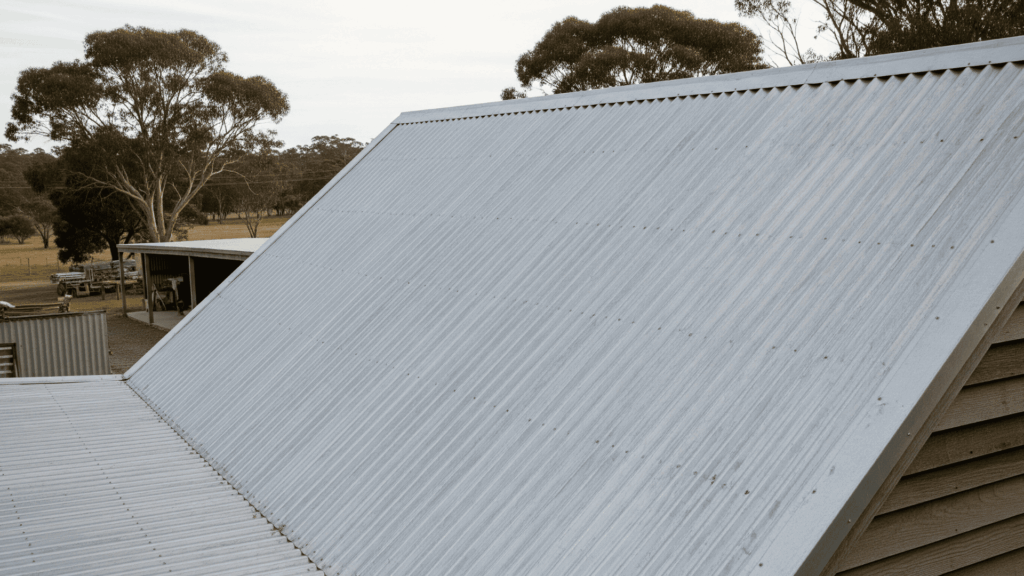
Corrugated panels have a distinctive wavy design that adds structural strength and sheds water effectively.
These panels, popular in agricultural, industrial, and residential projects, help achieve a rustic vintage look.
They’re lightweight, easy to install, and one of the most affordable metal roofing options available.
Corrugated stainless steel resists rust, making it ideal for damp or coastal climates.
Its traditional charm, low cost, and durability make it a practical, versatile roofing choice.
3. Steel Shingles
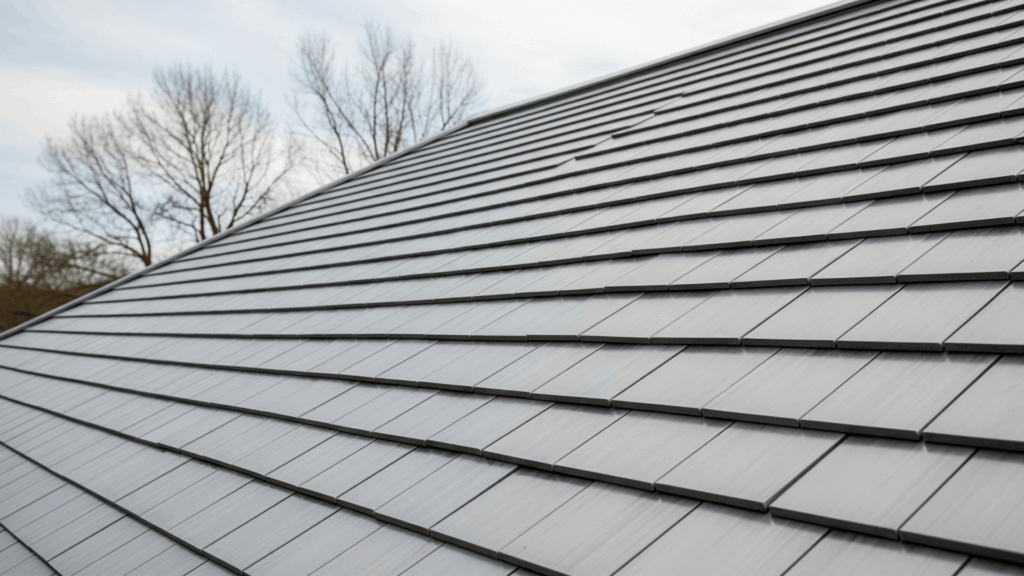
Steel shingles combine the charm of traditional roofing materials with the superior durability of stainless steel.
They’re stamped to resemble wood shakes, slate, or asphalt, offering visual variety without sacrificing strength.
Easy to install over existing roofs, they resist fire, rot, pests, and severe weather.
Their interlocking design improves wind resistance, while coatings enhance energy efficiency.
These shingles are ideal for homeowners wanting classic style and long-term protection.
With minimal upkeep, they deliver both curb appeal and outstanding performance.
Look at this quick overview table of all the roofing types:
| ROOFING TYPE | APPEARANCE | IDEAL FOR | COST (PER SQ. FT.) |
|---|---|---|---|
| Standing Seam | Modern and flat | Homes, low-slope roofs | $8–$14 |
| Corrugated Panels | Rustic and wavy | Barns, sheds, cabins | $5–$9 |
| Steel Shingles | Traditional look | Residential buildings | $9–$12 |
Stainless Steel vs Other Roofing Materials
Let’s break down how stainless steel competes with each material based on durability, climate performance, and maintenance needs.
1. Stainless vs. Galvanized Steel

Galvanized steel features a zinc coating that provides moderate protection but wears down over time, particularly in areas with salty air.
It’s more affordable but prone to rust and fading, which shortens its useful life in humid or coastal climates.
Stainless steel, on the other hand, contains chromium that resists corrosion even in harsh environments.
It has maintained its appearance and structure for decades without heavy maintenance.
For homeowners seeking long-lasting protection in wet or salty conditions, stainless steel is clearly the superior choice.
2. Stainless vs. Aluminum
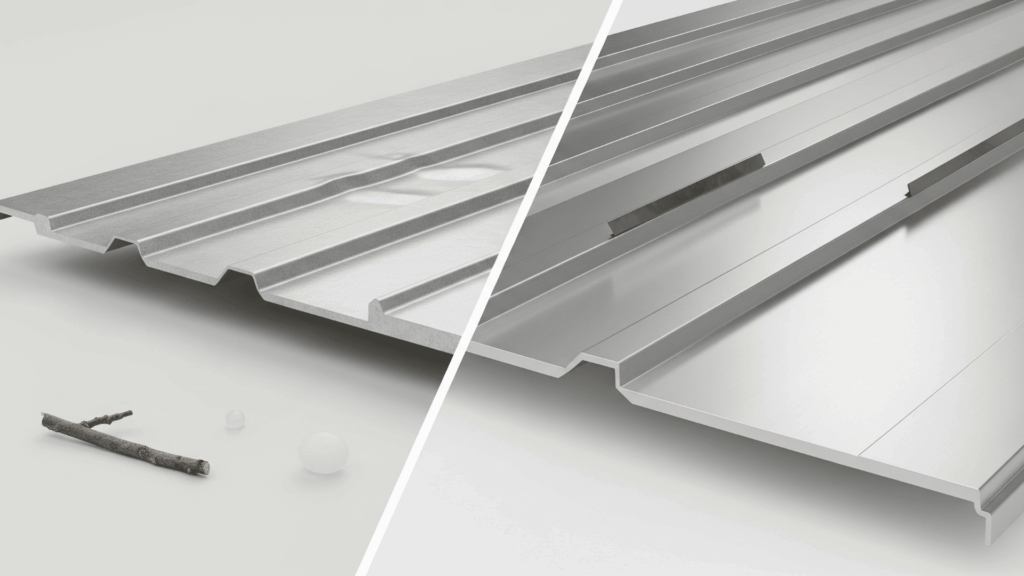
Aluminum roofing is corrosion-resistant and lightweight, making it a good option for homes with weaker structures.
It doesn’t rust, which is helpful in wet climates, but it can dent easily from hail or falling branches.
Stainless steel is heavier but far stronger and less likely to bend or warp.
It also handles snow loads and strong winds better.
While aluminum is more affordable, stainless steel offers enhanced durability and performance, especially for homeowners in regions with severe weather or long winters.
3. Stainless vs. Asphalt Shingles
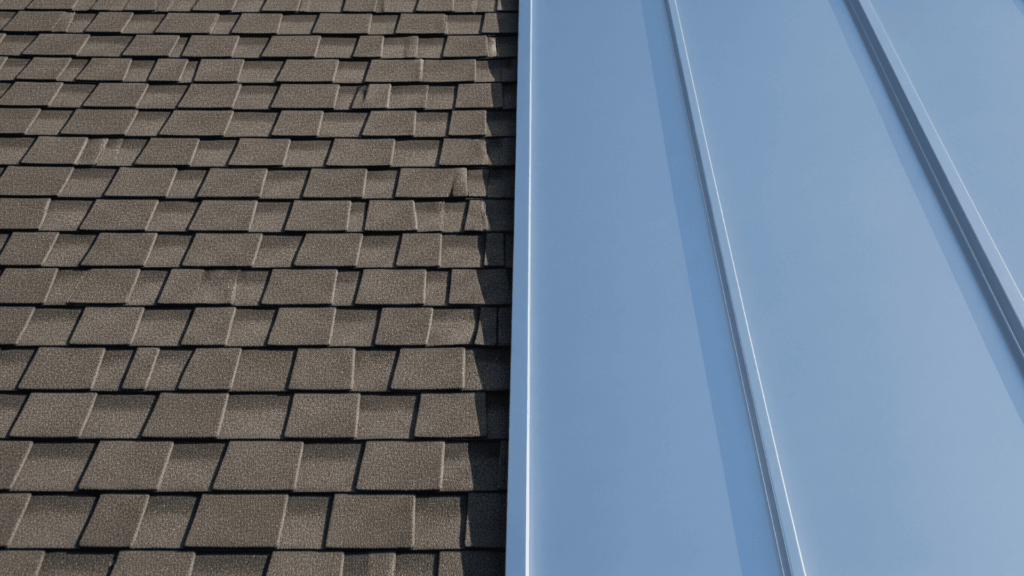
Asphalt shingles are widely used due to their low upfront cost and ease of installation. However, they usually need to be replaced every 20 to 30 years and require regular repairs after storms.
They’re vulnerable to mold, curling, and fading under sun exposure.
Stainless steel roofs, in contrast, withstand extreme weather and maintain their structure and finish for decades.
With less maintenance and no need for frequent replacements, stainless steel becomes more cost-effective over time.
It’s ideal for those seeking reliability and long-term savings.
Below is a quick comparison table:
| FEATURE | STAINLESS STEEL | GALVANIZED STEEL | ALUMINUM | ASPHALT SHINGLES |
|---|---|---|---|---|
| Lifespan | 50–70 years | 15–25 years | 30–50 yrs | 20–30 years |
| Rust Resistance | Excellent | Moderate | High | Low |
| Maintenance | Very Low | Medium | Low | High |
| Cost | $11.50/sq ft | $4.00/sq ft | $7.00/sq ft | $2.25/sq ft |
Cost Breakdown and Long-Term Value
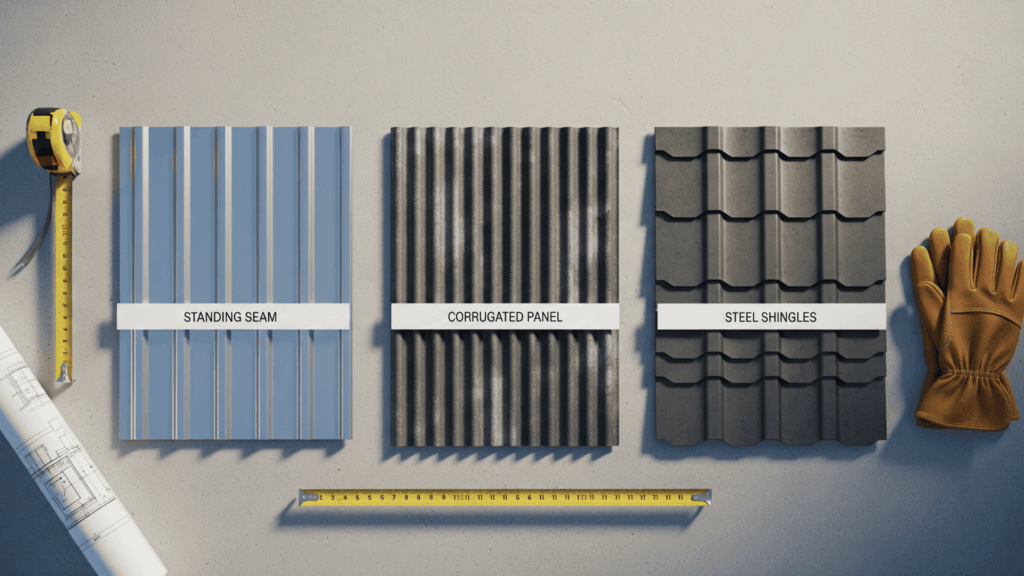
Stainless steel roofing costs $8 to $14 per square foot. The total price varies by design, panel type, and region.
Although it’s more expensive upfront, it saves money on future repairs and energy bills.
You’ll also likely avoid needing a full replacement for decades. Insurance discounts may apply, depending on your location and roof rating.
Over a 50-year span, stainless steel often costs less than replacing cheaper materials multiple times.
Let’s compare estimated costs for a typical 1,500-square-foot residential roof.
| ROOF TYPE | TOTAL COST RANGE | LIFESPAN | MAINTENANCE COST |
|---|---|---|---|
| Standing Seam | $12,000 – $21,000 | 60+ years | Low |
| Corrugated Panels | $9,000 – $13,500 | 50+ years | Low |
| Steel Shingles | $13,500 – $18,000 | 60+ years | Very Low |
Best Applications for Stainless Steel Roofs
Stainless steel roofing excels in areas where performance, durability, and aesthetics matter. Its resistance to rust, extreme weather, and aging makes it suitable for both modern homes and historic estates.
Homes in Harsh Climates
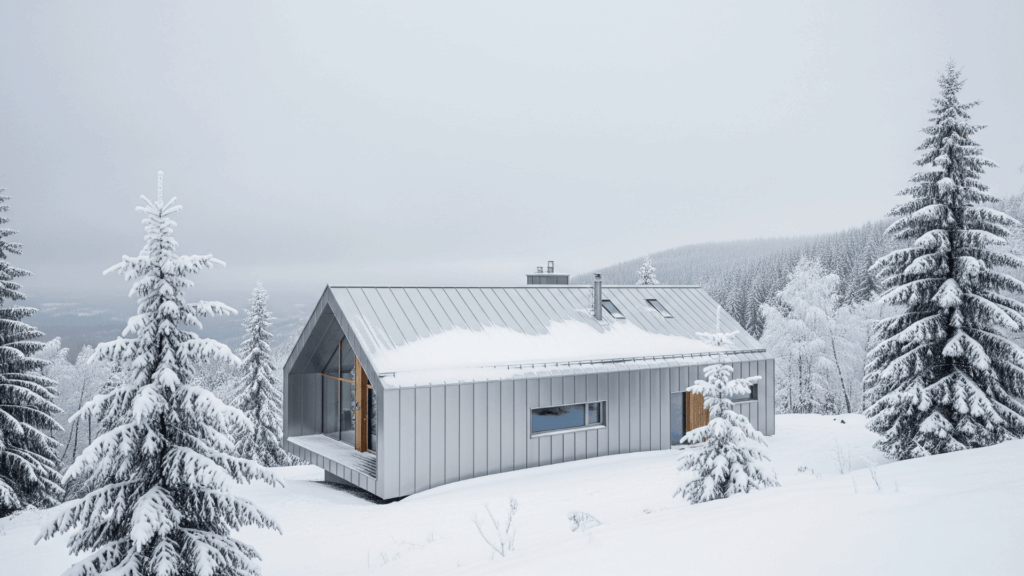
Stainless steel roofs are perfect for snowy regions, coastal areas, or locations with frequent storms or high humidity.
They resist salt corrosion, heavy snow loads, and temperature fluctuations, unlike traditional shingles that deteriorate quickly.
Homeowners in these areas benefit from fewer repairs, longer roof life, and peace of mind during extreme weather events.
Whether facing salty ocean air or heavy snowfall, stainless steel roofing provides year-round protection.
It’s the smart choice for long-term performance and structural reliability in challenging environments.
Commercial Buildings
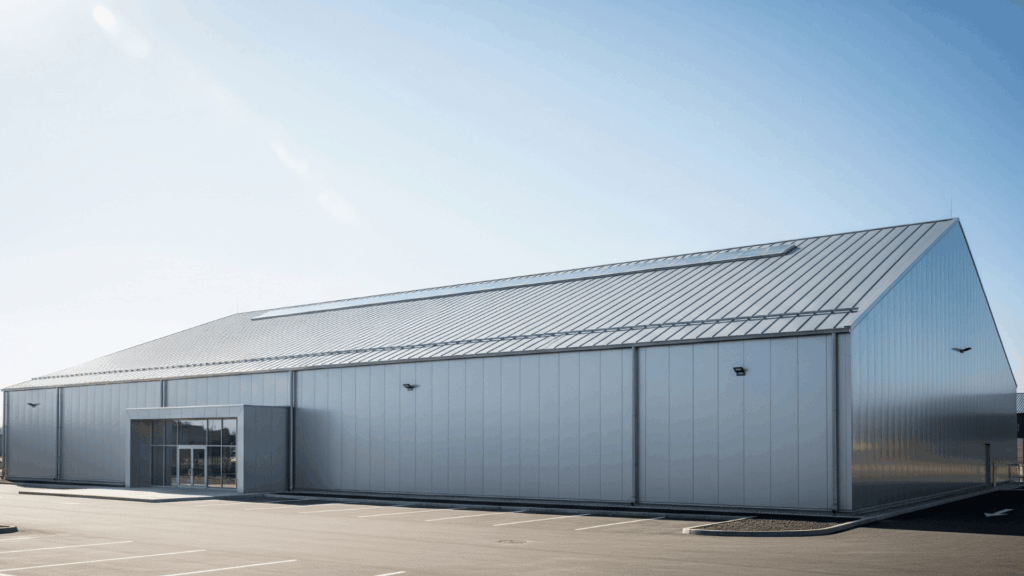
For factories, warehouses, and retail buildings, stainless steel roofing reduces maintenance costs while increasing energy efficiency.
Its reflective surface helps regulate indoor temperatures, cutting cooling costs during summer.
It’s also fire-resistant and strong enough to handle large spans without structural sagging.
Business owners save money over time thanks to its long lifespan and minimal upkeep.
In busy commercial settings, a durable and low-maintenance roofing system is key.
Stainless steel offers both economic and operational advantages that benefit any commercial property owner.
High-End or Historic Homes
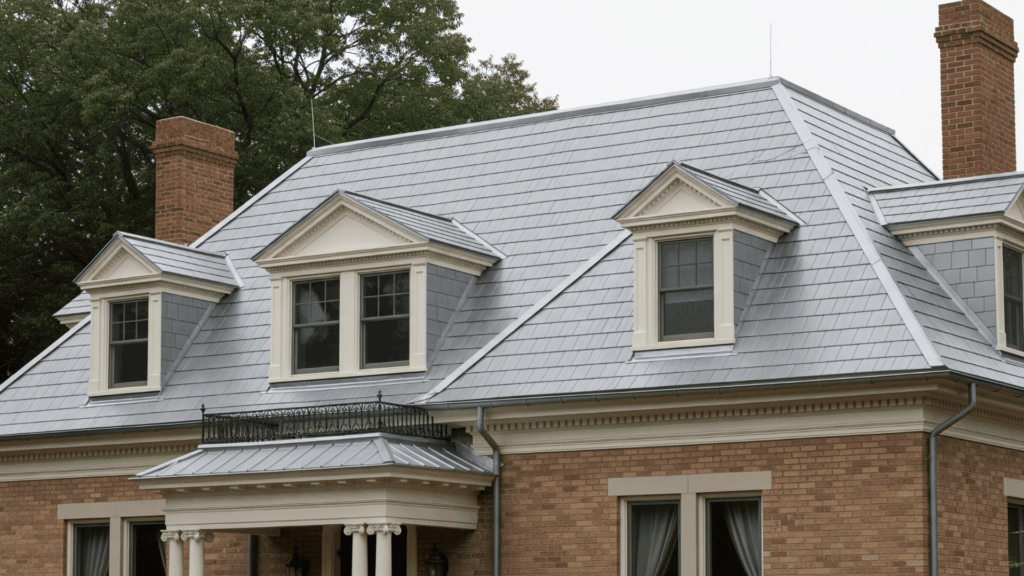
Stainless steel shingles replicate traditional roofing styles like slate or wood, preserving a property’s character and elegance.
This makes them ideal for historic renovations, luxury estates, or architecturally significant homes.
These roofs meet preservation standards while adding superior resistance to weather, fire, and decay.
Homeowners enjoy timeless style with modern strength.
For properties where appearance and heritage matter, stainless steel offers the perfect blend of beauty and performance.
Stainless Steel Roofs: Installation, Maintenance, and Warranties
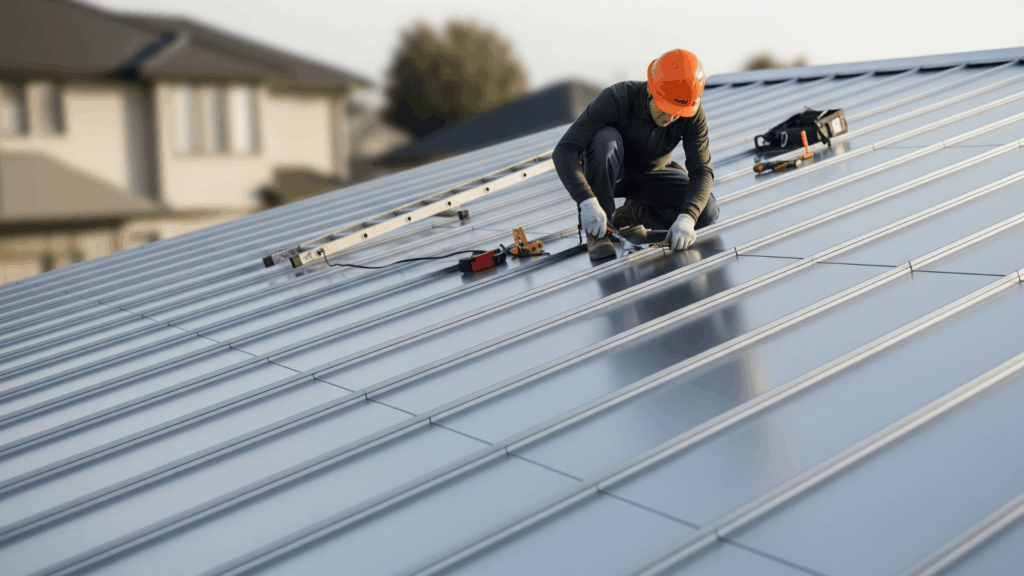
Stainless steel roofs need professional installation for leak-free performance.
Installers align panels carefully and seal seams. Cleaning is simple: rinse with water and remove any debris, such as leaves.
Avoid using harsh chemicals or pressure washers, as they can damage coatings.
Annual inspections help catch loose fasteners or seals. Most products offer warranties from 30 to 50 years.
These warranties often transfer to new owners, thereby adding to the resale value.
If you want a low-hassle roof with high reliability, stainless steel delivers long-term confidence and performance.
Final Thoughts: Should You Go Stainless?
If you need a roof that’s sleek, durable, and ready for extreme weather, stainless steel is the perfect choice.
It’s ideal for long-term homeowners, eco-conscious buyers, or anyone tired of frequent roof repairs.
Although the initial cost is higher, the benefits are long-lasting and worry-free.
From modern panels to traditional shingles, there’s a stainless steel option for you.
Did this help you out? Share it with friends or neighbors planning a roof upgrade, and they’ll thank you later!

